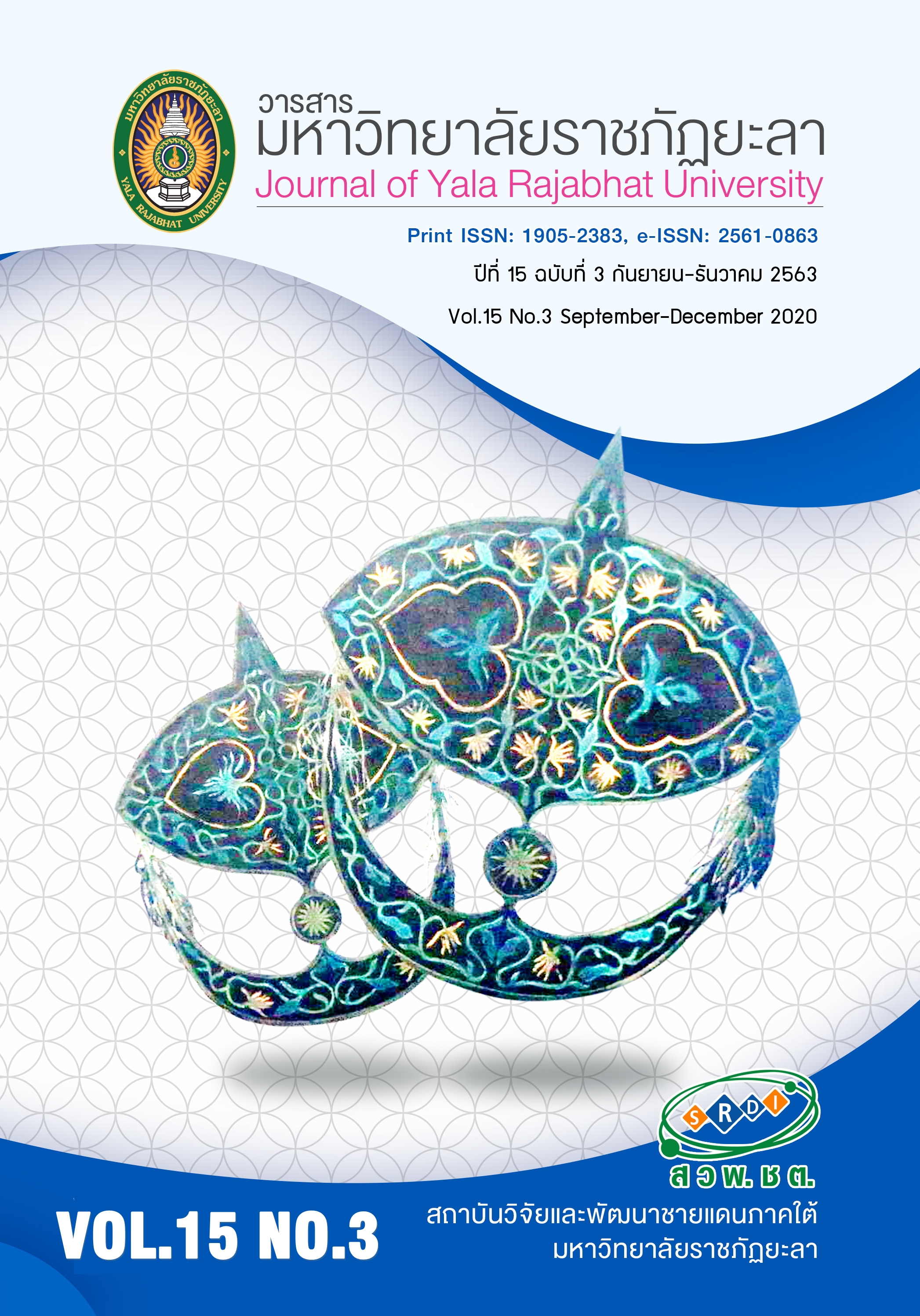นโยบายการจัดการศึกษาสำหรับเด็กด้อยโอกาสของประเทศไทยและต่างประเทศ
Main Article Content
บทคัดย่อ
การวิจัยครั้งนี้มีวัตถุประสงค์ เพื่อศึกษานโยบายการจัดการศึกษาสำหรับเด็กด้อยโอกาสภายในประเทศและต่างประเทศ โดยวิธีการวิจัยเอกสาร (Documentary analysis) ผลการวิเคราะห์พบว่า นโยบายการจัดการศึกษาของประเทศไทยและต่างประเทศมีความแตกต่างกัน 6 ด้านคือ การพัฒนาบริหารจัดการศึกษา นโยบายการจัดการเรียนการสอน งบประมาณ การมีส่วนร่วม บุคลากร และสภาพแวดล้อม ซึ่งนโยบายที่ประเทศไทยคล้ายต่างประเทศคือ ด้านการจัดการเรียนการสอนที่มีการบูรณาการการจัดการเรียนการสอนและสอดคล้องกับผู้เรียนมีการนำเทคโนโลยีมาใช้ในการเรียนการสอนการ มีส่วนร่วมทุกภาคส่วนในการจัดการเรียนการสอนและกิจกรรม นโยบายที่แตกต่างกันระหว่างประเทศไทยกับต่างประเทศคือนโยบายด้านการบริหารจัดการที่มีระบบการสั่งการแตกต่างกันของแต่ละประเทศ สภาพแวดล้อมและสิ่งอำนวยความสะดวกของแต่ละพื้นที่ นโยบายด้านบุคลากร และด้านงบประมาณ
Article Details
บทความ ข้อมูล เนื้อหา รูปภาพ ฯลฯ ที่ได้รับการเผยแพร่ในวารสารมหาวิทยาลัยราชภัฏยะลานี้ ถือเป็นลิขสิทธิ์ของวารสารมหาวิทยาลัยราชภัฏยะลา หากบุคคลหรือหน่วยงานใดต้องการนำทั้งหมดหรือส่วนหนึ่งส่วนใดไปเผยแพร่ต่อหรือกระทำการใดๆ จะต้องได้รับอนุญาตเป็นลายลักษณ์อักษรจากวารสารมหาวิทยาลัยราชภัฏยะลาก่อนเท่านั้น
เอกสารอ้างอิง
2. Arcia, G., Kevin, M., Harry, A. P. & Emilio, P. (2011). School autonomy and accountability. System assessment for benchmarking education for results, Regulatory and institutional framework. Washington, DC.: World Bank, Human Development Network.
3. Astin, A. W. (1968). The college environment. Washington D.C.: American Council on Education.
4. Attfield, I. & Vu, B. T. (2013). A rising tide of primary school standards—The role of data systems in improving equitable access for all to quality education in Vietnam. International Journal of Educational Development, 33(1),74-87.
5. Apaijai N. (2018). Education management model for career development disadvantaged student for schools under Royal Inititives. FEU Academic Review, 30(3), 32-45. (in Thai)
6. Brain, A. J. (2009). Improving educational outcomes for poor children. Focus, 26(2), 56-61.
7. Bruns, B., David, E. &Javier Luque. (2011). Achieving world-class education in Brazil: The next agenda. World Bank Publications.
8. Craft, L. J. (1998). The community school nexus the challenge of planning sustainable school Facilities. Dissertation Abstract International, 32(2), 1633-A.
9. Ministry of Education of the People’s Republic of China. (2010). Outline of China’s National Plan for Medium and Long-term Education Reform and Development (2010-2020), Beijing.
10. Oviedo, M. J. (2009). Expansion of higher education and the equity of opportunity in Colombia, Research work presented for M.R. (Applied Economic), Universitat Autonoma de Barcelona.
11. Pattamasiriwat, D. (2009). Fiscal inequality and grant allocation: Provincial analysis of Thailand’s local government finance. Srinakharinwirot Economics, 5(5), 7-33. (in Thai)
12. Perris, L. (1998). Implementing education reforms in New Zealand: 1987-97: a case study (English). The education reform and management series; Vol. 1, no. 1. Washington, D.C.: World Bank Group.
13. Piirto, J. (2007). Talented children and adults: Their development and education. 3rd ed. Texas: Prufrock Press Inc.
14. Sachanukorn, S. (2003). The coordination technique. Bangkok: Saitarnpulisher. (in Thai)
15. Schmidt, W. H. (2011). Equality of educational opportunity, myth or reality in U.S. schooling?. American educator winter 2010-2011. 34(4), 12-19.
16. Steele, P. E. & Wolanin, T. R. (2004). Higher education opportunities for students with disabilities: A primer for policymakers. Washington, D.C: The Institute for Higher Education Policy
17. Suwannasuan, W. (2013). A model of Alternative Education for Disadvantaged Children on Highlands in the Upper North of Thailand. Journal of Education Naresuan University, 15(5), 182-192. (in Thai)
18. Townsend, G. M. (1999). An exploratory study of factors that influence parent participation in parent involvement programs and the scholastic success of their children at an elementary school. Dissertations Abstracts International, 32(5), 265.
19. Tantichuwet, P. (2017). Appropriate educational provision guideline for out-of-school children: Case study at Tak Province. Base Program Budgeting Dissertation (Doctor of Philosophy) Dhurakij Pundit University.
20. Unicef. (1999). Report of the international conference on primary health care. New York: N.P. Press.
21. Unicef. (2016). Report of the international conference on primary health care. New York: N.P. Press.
22. Vitikka, E. (2015). Equity and quality ineducation: Supporting disadvantagedpupils and schools. Spotlight report: Netherlands. Paris: OECD Publishing.
23. Wasi, P. (2012). National education with local wisdom. Local Wisdom and Rural Development. Bangkok: Amarin Printing Group.
24. World Bank. (2005). Vietnam – targeted budget support for national education for all plan implementation program project. Washington, DC: World Bank.


